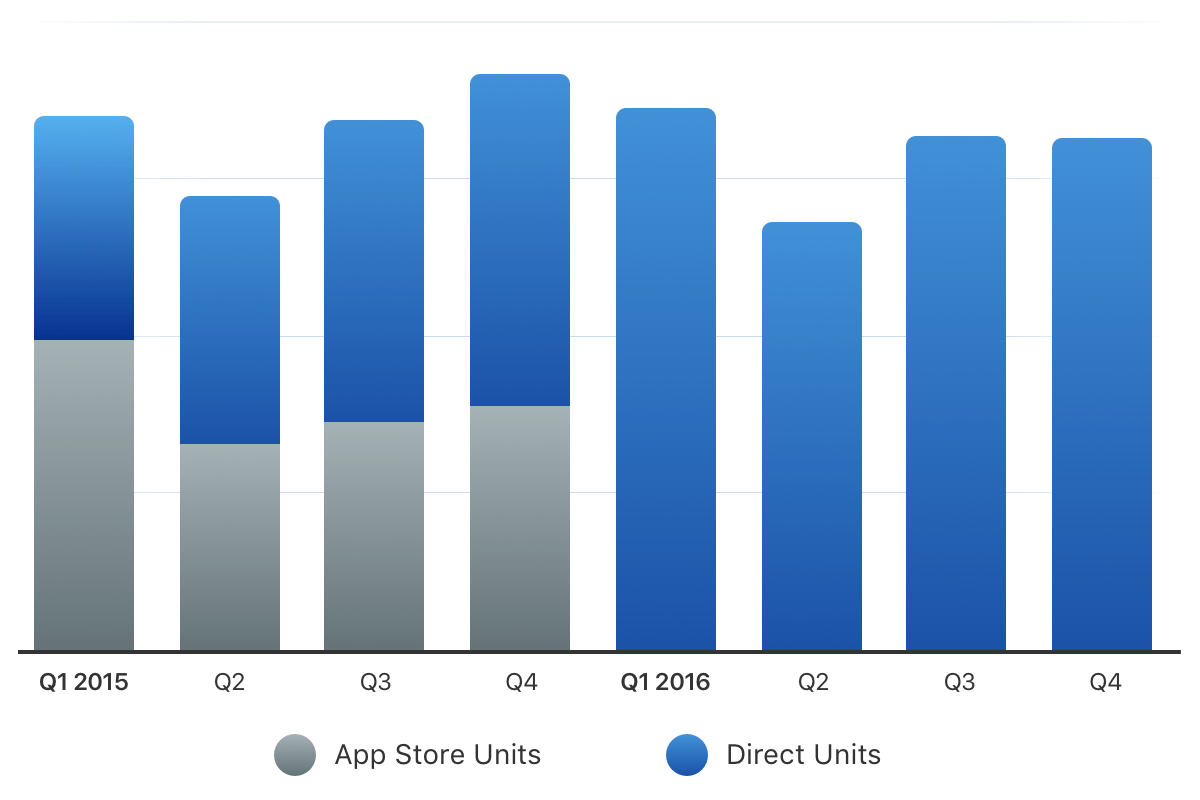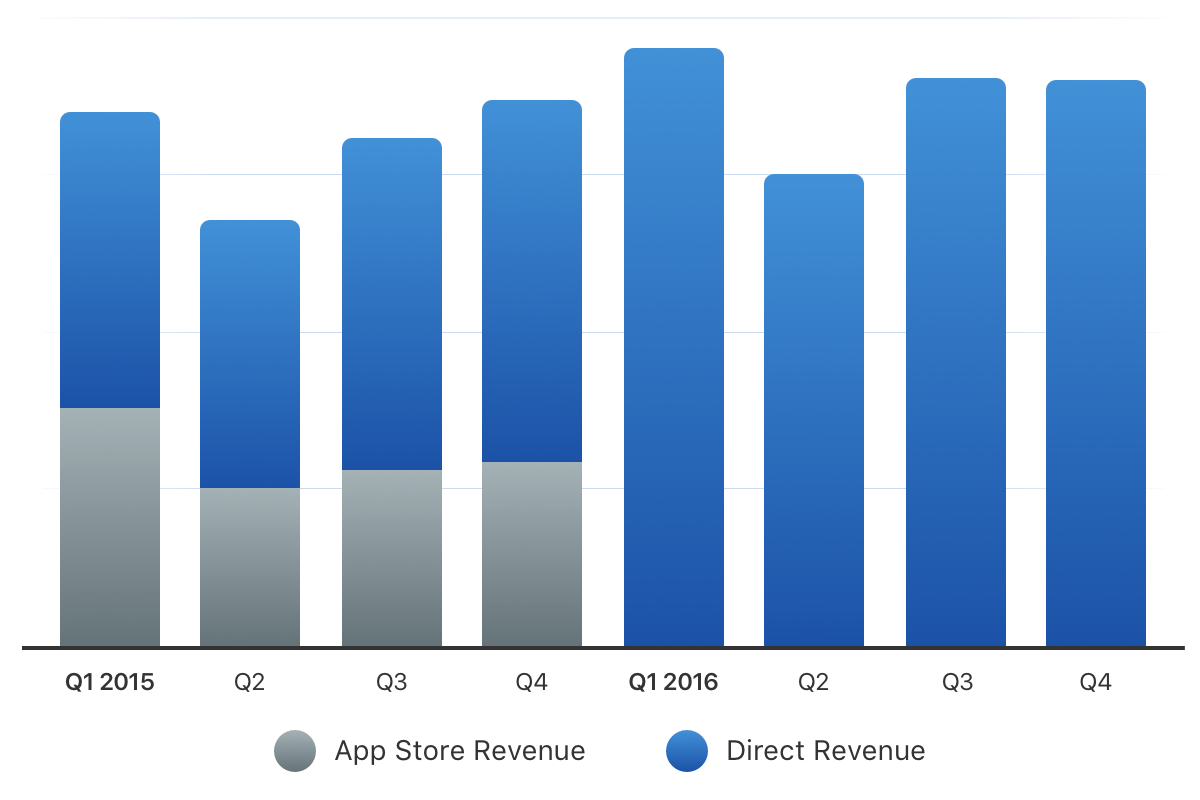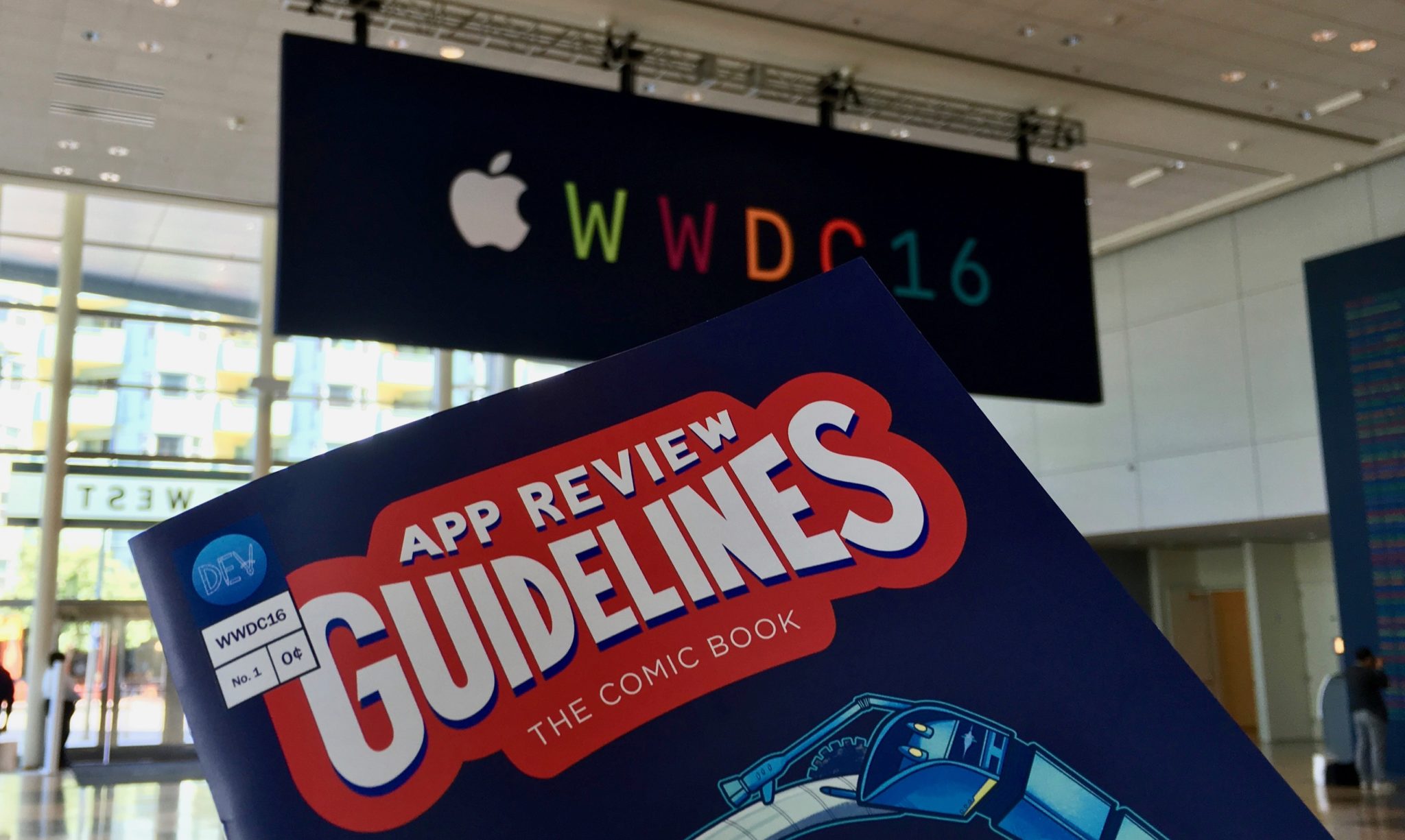[caption id="attachment_138519" align="aligncenter" width="1360"]

Mac App Store WWDC 2016[/caption] Do developers
need the Mac App Store? It’s a question many are asking themselves these days. Once a cornerstone for app deployment, its value is now suspect, and developers are starting to examine their use of it closely. The first to really hammer home the Mac App Store’s diminishing worth was Kapeli, which tangled with Apple over
its Dash app. The long-story-short there is that Kapeli owner Bogdan Pepescu had errantly linked the Kapeli account to a family member who was paying for App Store reviews.
Apple took the whole ship down. After Apple removed Dash from circulation because of the sketchy reviews, Popescu penned a blog detailing how sales actually rose. Part of the sales bump was undoubtedly due to the notoriety gained from the public back-and-forth with Apple, but the posting triggered chatter among developers nonetheless. If Dash
can make cash outside of Apple’s own portal, is the latter a sustainable model? Or take the case of Piezo, an app developed by Rogue Amoeba that appeals to the creative crowd. The app records audio, and positions itself as an easy, useful solution for podcasters. Dash prompted Rogue Amoeba to pull
Piezo from the Mac App Store, albeit without fanfare. The move
changed nothing, according to a blog post:
After seeing Kapeli’s chart, I was curious about the App Store’s impact on Piezo’s sales. The restrictions and limitations of the Mac App Store ultimately led us to remove Piezo on February 12th, 2016. We’ve now been selling it exclusively via our site for a year. This has provided about as perfect a real-world test case as one could hope for. Piezo’s removal came with minimal publicity, the price has remained constant at $19, and we’ve had no big updates or other major publicity for it in either 2015 or 2016. So what do the numbers tell us? Here’s a chart showing unit sales for the last four quarters in which Piezo was sold through both the Mac App Store and directly via our website, as well as the subsequent four quarters when it was sold exclusively via direct sale.
[caption id="attachment_139739" align="aligncenter" width="1200"]

Piezo's quarterly unit sales before and after the Mac App Store.[/caption]
The Mac App Store in Transition
While removing Piezo from the Mac App Store didn’t much affect unit sales, the real point of interest is revenue. As you can see from the chart above, unit sales were down slightly after Piezo went rogue. But Apple takes a 30 percent cut of all App Store sales. While Piezo's unit sales were down, revenue ticked upward, because Apple no longer took its slice. “In each of the four most recent quarters, Piezo brought in more revenue than it had in the corresponding quarter a year earlier,” the team wrote. “We earned more revenue when Piezo was available exclusively through our store than when we provided the App Store as another purchasing option.” Moreover, Rogue Amoeba highlighted how the Mac App Store works for Apple in some cases, not the developer:
In our case, however, it’s clear that we were serving Apple, rather than Apple serving us. By removing Piezo from the Mac App Store, we stopped paying a commission to Apple for the many customers who had found Rogue Amoeba on their own. Better still, we were able to improve the quality of the product while simplifying our work considerably. Ultimately, that alone was enough to convince us that leaving the Mac App Store was the right move. The subsequent revenue increase we’ve seen is merely a nice bonus.
[caption id="attachment_139740" align="aligncenter" width="1200"]

Piezo's quarterly revenue before and after the Mac App Store.[/caption] Although still in its infancy, a new contender has emerged with regard to app stores and hosting.
Setapp hopes to do for desktop apps what Netflix has done for movies, documentaries and TV shows. It operates on a subscription model: in exchange for $10 each month, Setapp gives you access to a growing suite of third-party apps. Developers pay nothing to host an app on Setapp, and revenue is based on app usage and longevity on the platform. Those with apps on Setapp can distribute elsewhere as they see fit. The Mac App Store also has a problem with "zombie apps," or apps that are no longer supported or exist just to "trick" you out of a few bucks with slick advertising and little content. Search for Excel, for example, and you’ll find a host of paid apps that promise to teach you how to master Microsoft’s spreadsheet tool (and reviews suggest they fall well short of that). You could argue that, in some ways, the Mac App Store is itself a zombie, limping along on the back of old thinking. It came into fashion before Product Hunt, and well ahead of the many app-centric tech blogs you probably find yourself reading now and then. It was built as the go-to for app discovery. Now it’s a shell of itself. [caption id="attachment_138521" align="aligncenter" width="3563"]

App Store Guidelines Comic WWDC 2016[/caption]
What’s Next?
Apple has given the iOS App Store some attention of late. It’s already begun the process of
purging sketchy apps en masse from that storefront, and has notified developers that
not migrating an app to 64-bit will result in its termination. But the Mac App Store may be indicative of broader internal thinking.
Swift’s focus has been iOS, with Apple making a concerted effort to fit its various API kits to the language. If you view iOS documentation, Swift is the default; Objective-C is still supported, but it’s clearly out of favor. Meanwhile, macOS has been handled the opposite way. AppKit has slowly made the move to Swift, and is now fairly adept with the new language, but things didn't happen nearly as quickly as they did for iPhone. In a way, that makes sense. The iOS App Store fronts Apple’s most lucrative platform, and is the only way to get apps for your iPhone or iPad. The Mac App Store doesn’t have such lock-in or related device sales. It’s a familiar avenue for sales and support, but not requisite.
Ahead of WWDC, and with developers continuing to hammer home how and why avoiding the Mac App Store is a better choice, we should expect Apple to self-correct. We’re not sure what form that may take, but cloning the iOS App Store's functionality top to bottom may be the best path forward. Desktop developers would likely find favor with ads, improved search and a better carousel of content. If nothing else, it wold reengage developers, and macOS needs that right now.
 Mac App Store WWDC 2016[/caption] Do developers need the Mac App Store? It’s a question many are asking themselves these days. Once a cornerstone for app deployment, its value is now suspect, and developers are starting to examine their use of it closely. The first to really hammer home the Mac App Store’s diminishing worth was Kapeli, which tangled with Apple over its Dash app. The long-story-short there is that Kapeli owner Bogdan Pepescu had errantly linked the Kapeli account to a family member who was paying for App Store reviews. Apple took the whole ship down. After Apple removed Dash from circulation because of the sketchy reviews, Popescu penned a blog detailing how sales actually rose. Part of the sales bump was undoubtedly due to the notoriety gained from the public back-and-forth with Apple, but the posting triggered chatter among developers nonetheless. If Dash can make cash outside of Apple’s own portal, is the latter a sustainable model? Or take the case of Piezo, an app developed by Rogue Amoeba that appeals to the creative crowd. The app records audio, and positions itself as an easy, useful solution for podcasters. Dash prompted Rogue Amoeba to pull Piezo from the Mac App Store, albeit without fanfare. The move changed nothing, according to a blog post:
Mac App Store WWDC 2016[/caption] Do developers need the Mac App Store? It’s a question many are asking themselves these days. Once a cornerstone for app deployment, its value is now suspect, and developers are starting to examine their use of it closely. The first to really hammer home the Mac App Store’s diminishing worth was Kapeli, which tangled with Apple over its Dash app. The long-story-short there is that Kapeli owner Bogdan Pepescu had errantly linked the Kapeli account to a family member who was paying for App Store reviews. Apple took the whole ship down. After Apple removed Dash from circulation because of the sketchy reviews, Popescu penned a blog detailing how sales actually rose. Part of the sales bump was undoubtedly due to the notoriety gained from the public back-and-forth with Apple, but the posting triggered chatter among developers nonetheless. If Dash can make cash outside of Apple’s own portal, is the latter a sustainable model? Or take the case of Piezo, an app developed by Rogue Amoeba that appeals to the creative crowd. The app records audio, and positions itself as an easy, useful solution for podcasters. Dash prompted Rogue Amoeba to pull Piezo from the Mac App Store, albeit without fanfare. The move changed nothing, according to a blog post:
 Piezo's quarterly unit sales before and after the Mac App Store.[/caption]
Piezo's quarterly unit sales before and after the Mac App Store.[/caption]
 Piezo's quarterly revenue before and after the Mac App Store.[/caption] Although still in its infancy, a new contender has emerged with regard to app stores and hosting. Setapp hopes to do for desktop apps what Netflix has done for movies, documentaries and TV shows. It operates on a subscription model: in exchange for $10 each month, Setapp gives you access to a growing suite of third-party apps. Developers pay nothing to host an app on Setapp, and revenue is based on app usage and longevity on the platform. Those with apps on Setapp can distribute elsewhere as they see fit. The Mac App Store also has a problem with "zombie apps," or apps that are no longer supported or exist just to "trick" you out of a few bucks with slick advertising and little content. Search for Excel, for example, and you’ll find a host of paid apps that promise to teach you how to master Microsoft’s spreadsheet tool (and reviews suggest they fall well short of that). You could argue that, in some ways, the Mac App Store is itself a zombie, limping along on the back of old thinking. It came into fashion before Product Hunt, and well ahead of the many app-centric tech blogs you probably find yourself reading now and then. It was built as the go-to for app discovery. Now it’s a shell of itself. [caption id="attachment_138521" align="aligncenter" width="3563"]
Piezo's quarterly revenue before and after the Mac App Store.[/caption] Although still in its infancy, a new contender has emerged with regard to app stores and hosting. Setapp hopes to do for desktop apps what Netflix has done for movies, documentaries and TV shows. It operates on a subscription model: in exchange for $10 each month, Setapp gives you access to a growing suite of third-party apps. Developers pay nothing to host an app on Setapp, and revenue is based on app usage and longevity on the platform. Those with apps on Setapp can distribute elsewhere as they see fit. The Mac App Store also has a problem with "zombie apps," or apps that are no longer supported or exist just to "trick" you out of a few bucks with slick advertising and little content. Search for Excel, for example, and you’ll find a host of paid apps that promise to teach you how to master Microsoft’s spreadsheet tool (and reviews suggest they fall well short of that). You could argue that, in some ways, the Mac App Store is itself a zombie, limping along on the back of old thinking. It came into fashion before Product Hunt, and well ahead of the many app-centric tech blogs you probably find yourself reading now and then. It was built as the go-to for app discovery. Now it’s a shell of itself. [caption id="attachment_138521" align="aligncenter" width="3563"]  App Store Guidelines Comic WWDC 2016[/caption]
App Store Guidelines Comic WWDC 2016[/caption]


